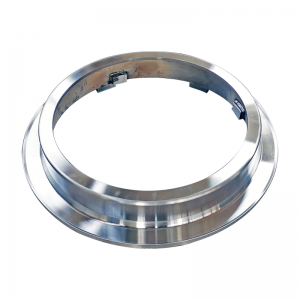- Afrikaans
- Albanian
- Amharic
- Arabic
- Armenian
- Azerbaijani
- Basque
- Belarusian
- Bengali
- Bosnian
- Bulgarian
- Catalan
- Cebuano
- China
- China (Taiwan)
- Corsican
- Croatian
- Czech
- Danish
- Dutch
- English
- Esperanto
- Estonian
- Finnish
- French
- Frisian
- Galician
- Georgian
- German
- Greek
- Gujarati
- Haitian Creole
- hausa
- hawaiian
- Hebrew
- Hindi
- Miao
- Hungarian
- Icelandic
- igbo
- Indonesian
- irish
- Italian
- Japanese
- Javanese
- Kannada
- kazakh
- Khmer
- Rwandese
- Korean
- Kurdish
- Kyrgyz
- Lao
- Latin
- Latvian
- Lithuanian
- Luxembourgish
- Macedonian
- Malgashi
- Malay
- Malayalam
- Maltese
- Maori
- Marathi
- Mongolian
- Myanmar
- Nepali
- Norwegian
- Norwegian
- Occitan
- Pashto
- Persian
- Polish
- Portuguese
- Punjabi
- Romanian
- Russian
- Samoan
- Scottish Gaelic
- Serbian
- Sesotho
- Shona
- Sindhi
- Sinhala
- Slovak
- Slovenian
- Somali
- Spanish
- Sundanese
- Swahili
- Swedish
- Tagalog
- Tajik
- Tamil
- Tatar
- Telugu
- Thai
- Turkish
- Turkmen
- Ukrainian
- Urdu
- Uighur
- Uzbek
- Vietnamese
- Welsh
- Bantu
- Yiddish
- Yoruba
- Zulu
दिसम्बर . 10, 2024 00:23 Back to list
Optimizing Temperature Management in Heat Exchangers for Enhanced Efficiency and Performance
Temperature Control in a Heat Exchanger An Overview
Heat exchangers are vital components in a wide range of industrial processes, as they facilitate the transfer of heat between two or more fluids at different temperatures. Ensuring effective temperature control in these systems is critical for optimizing performance, achieving energy efficiency, and maintaining process safety. This article will explore the significance of temperature control in heat exchangers, the methods used to achieve this control, and the implications for various industries.
Importance of Temperature Control
Temperature control in heat exchangers is essential for several reasons. First and foremost, it affects the thermal efficiency of the heat exchange process. If the temperatures of the fluids are not optimally regulated, it can lead to suboptimal heat transfer rates, resulting in wasted energy and increased operational costs. Moreover, maintaining the desired temperature is crucial for achieving the required product quality in applications such as chemical manufacturing, pharmaceuticals, and food processing.
In addition to energy efficiency and product quality, effective temperature control is vital for ensuring safety. In processes where reactions are temperature-sensitive, excessive heat can lead to undesirable reactions or even dangerous situations, such as explosions or equipment failures. Therefore, maintaining the operational temperatures within specified limits is key to safeguarding personnel, equipment, and the environment.
Methods of Temperature Control
There are several methods used to control temperature in heat exchangers. These can be broadly classified into active and passive systems.
1. Active Control Systems These systems frequently involve the use of temperature sensors, controllers, and actuators that enable real-time adjustments based on the feedback from the system.
- Temperature Sensors Devices like thermocouples or resistance temperature detectors (RTDs) monitor the temperature of fluids at various points within the heat exchanger.
- Controllers A controller (usually a PID controller) processes the input from the temperature sensors and determines the necessary adjustments to maintain the desired setpoint
.temperature control in a heat exchanger

- Actuators These are devices that physically alter the flow rates of the fluids or the heat transfer surface area in response to commands from the controller. Examples include valve control systems that adjust the flow of one or both fluids based on temperature readings.
2. Passive Control Systems While less dynamic than active systems, passive methods rely on material properties and design features to maintain desired temperatures.
- Insulation Proper insulation of heat exchangers helps minimize heat losses to the environment or gain from external sources, thereby maintaining more stable internal temperatures.
- Flow Arrangement The design of the heat exchanger itself, such as counterflow or parallel flow configurations, can significantly impact the efficiency of heat transfer and, consequently, temperature control.
- Heat Transfer Enhancement Utilizing structures like fins or enhanced surface materials increases the surface area for heat exchange, aiding in temperature control without the need for energy-intensive active systems.
Challenges in Temperature Control
Despite the various methods available, maintaining effective temperature control in heat exchangers faces numerous challenges. Fluctuations in feed fluid temperatures, flow rates, and varying properties of the fluids can complicate control. Additionally, scaling, fouling, or corrosion within the exchanger can reduce heat transfer efficiency, leading to difficulties in maintaining desired temperatures.
Moreover, the integration of advanced process automation and data analytics can enhance control strategies. Utilizing predictive algorithms and machine learning can help anticipate fluctuations and adjust control parameters proactively, thus improving the overall performance of the system.
Conclusion
In conclusion, temperature control in heat exchangers plays a crucial role in optimizing performance, ensuring energy efficiency, and maintaining safety across various industrial applications. Through a combination of active and passive control methods, industries can effectively manage temperature variations and improve heat exchanger efficiency. However, ongoing challenges necessitate innovative solutions and advanced technologies to enhance control strategies, ensuring that heat exchangers continue to meet the ever-increasing demands of modern industrial processes. As the pursuit of sustainability and efficiency grows, advancements in temperature control systems will undoubtedly play a pivotal role in shaping the future of thermal energy management.
-
8mm Thin-Walled Cast Steel Manhole Cover Pallet Bottom Ring | Durable
NewsAug.04,2025
-
Premium Cast Iron Water Main Pipe: Durable, Corrosion-Resistant
NewsAug.03,2025
-
Durable Cast Iron Water Mains | AI-Optimized Systems
NewsAug.02,2025
-
High-Efficiency Propane Boiler for Baseboard Heat | Save Energy
NewsAug.01,2025
-
Premium Source Suppliers for Various Gray Iron Castings
NewsJul.31,2025
-
Durable Cast Iron Water Main Pipes | Long-Lasting
NewsJul.31,2025


